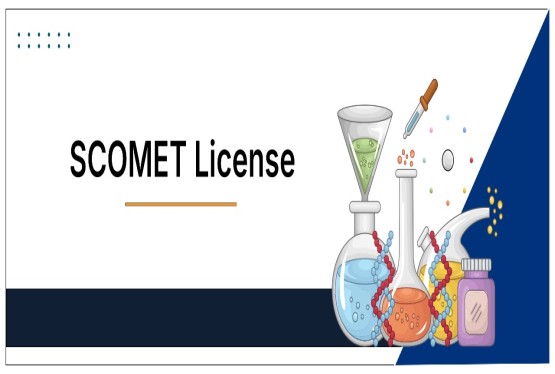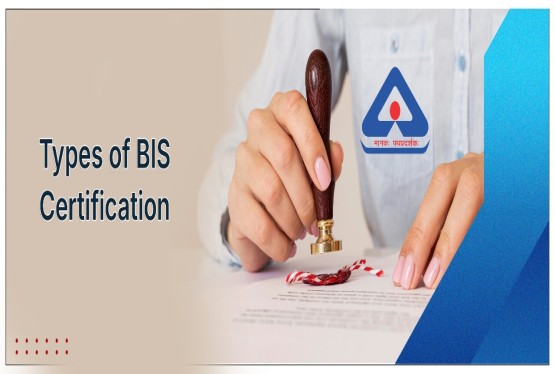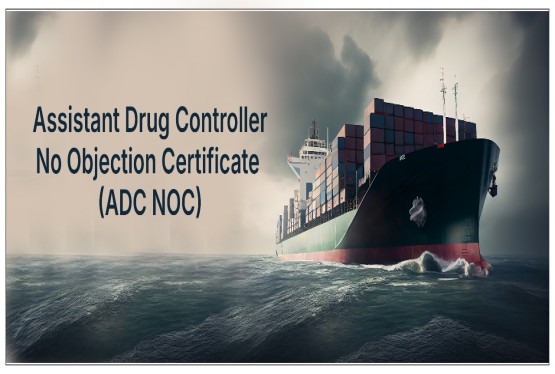The manufacturing and regulation of InVitro Diagnostic Devices (IVDs) in India are governed by the Drugs and Cosmetics Act, 1940, and the Medical Device Rules, 2017. The term "InVitro Diagnostic Device" refers to medical instruments or kits used to test samples like blood, urine, or tissue taken from the human body. These devices help diagnose diseases, monitor health conditions, and play a vital role in treatment decisions.
With growing medical technology, the Government of India, through the Central Drugs Standard Control Organization (CDSCO), introduced structured licensing rules for the manufacturing and distribution of IVDs. In this article, we’ll discuss in detail the InVitro Diagnostic Device Manufacturing License, its classification, regulatory authorities, required forms, documents, and the step-by-step application process.
What is an InVitro Diagnostic Device?
InVitro Diagnostic Devices are medical tools such as kits, reagents, instruments, and systems that are used to perform tests on samples taken from the human body. These devices detect infections, diagnose medical conditions like diabetes or HIV, and support patient treatment and monitoring. For example, a COVID-19 rapid antigen testing kit is an IVD.
The manufacturing of these devices needs to comply with strict quality and safety standards, which is why the Government of India mandates a license through proper channels under the CDSCO.
Legal Background and Need for Licensing
Earlier, India did not have a specific system to register IVDs. However, in 2017, the Government officially included IVDs in the regulatory framework under the Medical Device Rules, 2017, which fall under the broader scope of the Drugs and Cosmetics Act, 1940.
Currently, there are 250 products classified as InVitro Diagnostic Devices and 462 as other medical devices under the notified rules. To ensure safe usage, proper quality control, and market approval, manufacturers must obtain the CDSCO InVitro Diagnostic Device Manufacturing License before production.
Classification of InVitro Diagnostic Devices
Under the Medical Device Rules, 2017, IVDs are classified into four categories based on the level of risk and their intended use. Understanding these classifications is crucial for identifying the correct application and licensing pathway.
1. Classification Based on Risk
According to Part II of the First Schedule of the Medical Device Rules, IVDs are categorized as:
-
Class A (Low Risk): Basic tests with minimal impact on patient health.
-
Class B (Low to Moderate Risk): Slightly more critical tests but still not life-threatening.
-
Class C (Moderate to High Risk): Includes devices that test for serious conditions.
-
Class D (High Risk): Devices used to test for life-threatening diseases such as HIV or Hepatitis B.
Under Chapter II, Rule 4, Sub-rule (2) of the Rules, the classification also considers the device's intended use. Some specific categories include:
-
IVDs for HIV detection
-
IVDs for HBV detection
-
IVDs for HCV detection
-
Blood grouping sera and cross-match testing kits
These classifications help determine whether a State Licensing Authority (SLA) or CDSCO will grant the license.
Regulatory Authorities for IVD Manufacturing License
Different regulatory bodies are responsible for issuing licenses based on the class of IVD:
1. State Licensing Authority (SLA)
For Class A and Class B devices, the manufacturing license is issued by the State Licensing Authority in each state and Union Territory. The application must be submitted to the State Drugs Control Authority where the manufacturing unit is located.
2. Central Drugs Standard Control Organization (CDSCO)
For Class C and Class D devices, the license is granted by CDSCO, which operates under the Directorate General of Health Services, Ministry of Health and Family Welfare, Government of India. CDSCO is the National Licensing Authority responsible for regulating high-risk IVDs.
Forms Used in the IVD Manufacturing License Process
To obtain a CDSCO InVitro Diagnostic Device Manufacturing License, manufacturers must apply using the correct form depending on the device class and whether they are applying for a regular or loan license.
|
Type of License |
Class |
Application Form |
Approval Form |
|
Manufacturing License |
A & B |
Form MD-3 |
Form MD-5 |
|
Loan License |
A & B |
Form MD-4 |
Form MD-6 |
|
Manufacturing License |
C & D |
Form MD-7 |
Form MD-9 |
|
Loan License |
C & D |
Form MD-8 |
Form MD-9 |
Each form has a distinct purpose. For example, a loan license is issued when a manufacturer wants to use another licensed facility to manufacture their devices.
Documents Required for Filing IVD Manufacturing License
Applicants must prepare and submit various administrative and technical documents while applying for the InVitro Diagnostic Device Manufacturing License. These documents include:
Basic Documents:
-
Covering letter stating the purpose
-
Duly filled application form (as per device class)
-
Government challan or receipt of prescribed fee
-
Company Constitution Documents:
-
Partnership Deed (for partnership firms)
-
Memorandum & Articles of Association (for companies like Private Limited Company, Public Limited Company, One Person Company (OPC), etc.)
-
Declaration of partners/directors
-
Identity proof and address proof of all key persons
-
Ownership/rental documents of the manufacturing site
Master File Documentation:
-
Declaration of Manufacturing Chemist
-
Declaration of Analytical Chemist
-
Educational qualifications, experience, and certificates of both chemists
-
ID proof, appointment letters, and approvals
-
DIC (District Industries Centre) Registration
-
Consent to establish and consent to operate from the relevant State Pollution Control Board
-
Performance Evaluation Report (if applicable)
-
Copy of existing Test License (if applicable)
-
Self-declaration that the site complies with the Fifth Schedule standards
Additional Documents for Loan License:
-
Consent letter from the primary manufacturing unit
-
Wholesale drug license of the loan applicant
-
Valid manufacturing license and product permission copy of the principal unit
Step-by-Step Process to Get an InVitro Diagnostic Device Manufacturing License
To manufacture IVDs, the applicant must follow a detailed and regulated procedure. Below is the step-by-step guide:
Step 1: Filing the Application
The applicant must submit the appropriate form (MD-3, MD-4, MD-7, or MD-8) along with all required documents and the application fee. Applications for Class A & B go to the SLA, while Class C & D applications are submitted to the CDSCO.
Step 2: Scrutiny of the Application
Once submitted, the application is reviewed. If documents or details are missing, the licensing authority will raise queries or ask for clarification. Applicants must respond promptly to prevent delays.
Step 3: Audit of Manufacturing Premises
An inspection or audit is conducted by a Notified Body to ensure that the manufacturing site follows quality standards. If there are any non-compliance issues, they must be resolved, and a closure report must be submitted.
Step 4: Examination of Audit Report
The licensing authority examines the audit report. If found satisfactory, the process moves forward.
Step 5: Product Evaluation
The next step involves reviewing the product's safety, intended use, and compliance with required norms. Product samples and performance evaluation reports may also be scrutinized.
Step 6: Grant of License
If everything is in order, the licensing authority grants the CDSCO InVitro Diagnostic Device Manufacturing License. Once the license is granted, the applicant is legally allowed to manufacture and distribute IVDs in the Indian market.
Why is the CDSCO InVitro Diagnostic Device Manufacturing License Important?
Getting a valid license from CDSCO or SLA is not just a legal requirement—it also reflects the manufacturer's commitment to safety and quality. The license:
-
Ensures regulatory compliance
-
Boosts credibility in the domestic and global market
-
Allows lawful production and distribution
-
Prevents regulatory actions or penalties
-
Enables participation in government tenders
Conclusion
With the increase in demand for medical diagnostics in India, InVitro Diagnostic Devices are becoming an important part of healthcare infrastructure. The CDSCO has taken significant steps to streamline the licensing process while ensuring public safety and global standards.
By following the proper application steps, submitting correct documents, and ensuring regulatory compliance, manufacturers can obtain the InVitro Diagnostic Device Manufacturing License and contribute to the growing field of healthcare and diagnostics.
If you are planning to start an IVD manufacturing business or need help with the licensing process, it is always better to consult with Compliance Calendar experts. You can book a free consultation through email info@ccoffice.in or Call/Whatsapp at +91 9988424211.
FAQs
Q1. What are the different risk classifications for In Vitro Diagnostic (IVD) devices in India, and how do they affect the licensing process?
Ans. The Medical Devices Rules, 2017 (MDR 2017) classify IVDs into four risk categories: Class A (low risk), Class B (low to moderate risk), Class C (moderate to high risk), and Class D (high risk). The classification determines which regulatory authority handles the licensing (State Licensing Authority for Class A and B, Central Licensing Authority for Class C and D) and the specific documentation required.
Q2. What are the key documents required when applying for an IVD manufacturing license in India?
Ans. Key documents include the Device Master File (DMF), Plant Master File (PMF), Clinical Performance Evaluation data (especially for new or high-risk devices), samples of product labels and user manuals, and an Undertaking of Conformity, which declares compliance with applicable standards and regulations.
Q3. What is ISO 13485, and why is it important for obtaining an IVD manufacturing license in India?
Ans. ISO 13485 is an internationally recognized Quality Management System (QMS) standard for medical devices. Compliance with this standard is mandatory under the MDR 2017. It ensures that manufacturers have robust systems in place for design, production, and post-market surveillance, which are critical for maintaining the safety and quality of IVD devices.
Q4. What happens during the inspection and audit of an IVD manufacturing facility by the regulatory authority?
Ans. The regulatory authority inspects the manufacturing facility to verify compliance with Good Manufacturing Practices (GMP) and QMS requirements. This includes assessing facility infrastructure and hygiene, equipment calibration and maintenance, staff qualifications and training, and documentation and record-keeping practices.
Q5. What are the post-licensing obligations for IVD manufacturers in India?
Ans. Post-licensing obligations include maintaining compliance with QMS and GMP standards, reporting any adverse events or product recalls to the regulatory authority, applying for license renewal before expiry, and keeping detailed records of manufacturing, testing, and distribution activities.












































































_crop10_thumb.jpg)







_Rules,_2025_learn_crop10_thumb.jpg)




























































